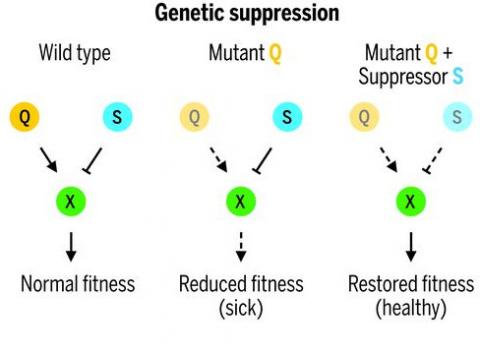Exploring genetic suppression interactions on a global scale

van Leeuwen J, Pons C, Mellor JC, Yamaguchi TN, Friesen H, Koschwanez J, Ušaj MM, Pechlaner M, Takar M, Ušaj M, VanderSluis B, Andrusiak K, Bansal P, Baryshnikova A, Boone CE, Cao J, Cote A, Gebbia M, Horecka G, Horecka I, Kuzmin E, Legro N, Liang W, van Lieshout N, McNee M, San Luis BJ, Shaeri F, Shuteriqi E, Sun S, Yang L, Youn JY, Yuen M, Costanzo M, Gingras AC, Aloy P, Oostenbrink C, Murray A, Graham TR, Myers CL, Andrews BJ, Roth FP, Boone C, Genetic suppression occurs when the phenotypic defects caused by a mutation in a particular gene are rescued by a mutation in a second gene. To explore the principles of genetic suppression, we examined both literature-curated and unbiased experimental data, involving systematic genetic mapping and whole-genome sequencing, to generate a large-scale suppression network among yeast genes. Most suppression pairs identified novel relationships among functionally related genes, providing new insights into the functional wiring diagram of the cell. In addition to suppressor mutations, we identified frequent secondary mutations,in a subset of genes, that likely cause a delay in the onset of stationary phase, which appears to promote their enrichment within a propagating population. These findings allow us to formulate and quantify general mechanisms of genetic suppression.
Science,
2016, 354
Pubmed: 27811238
Direct link: 10.1126/science.aag0839
